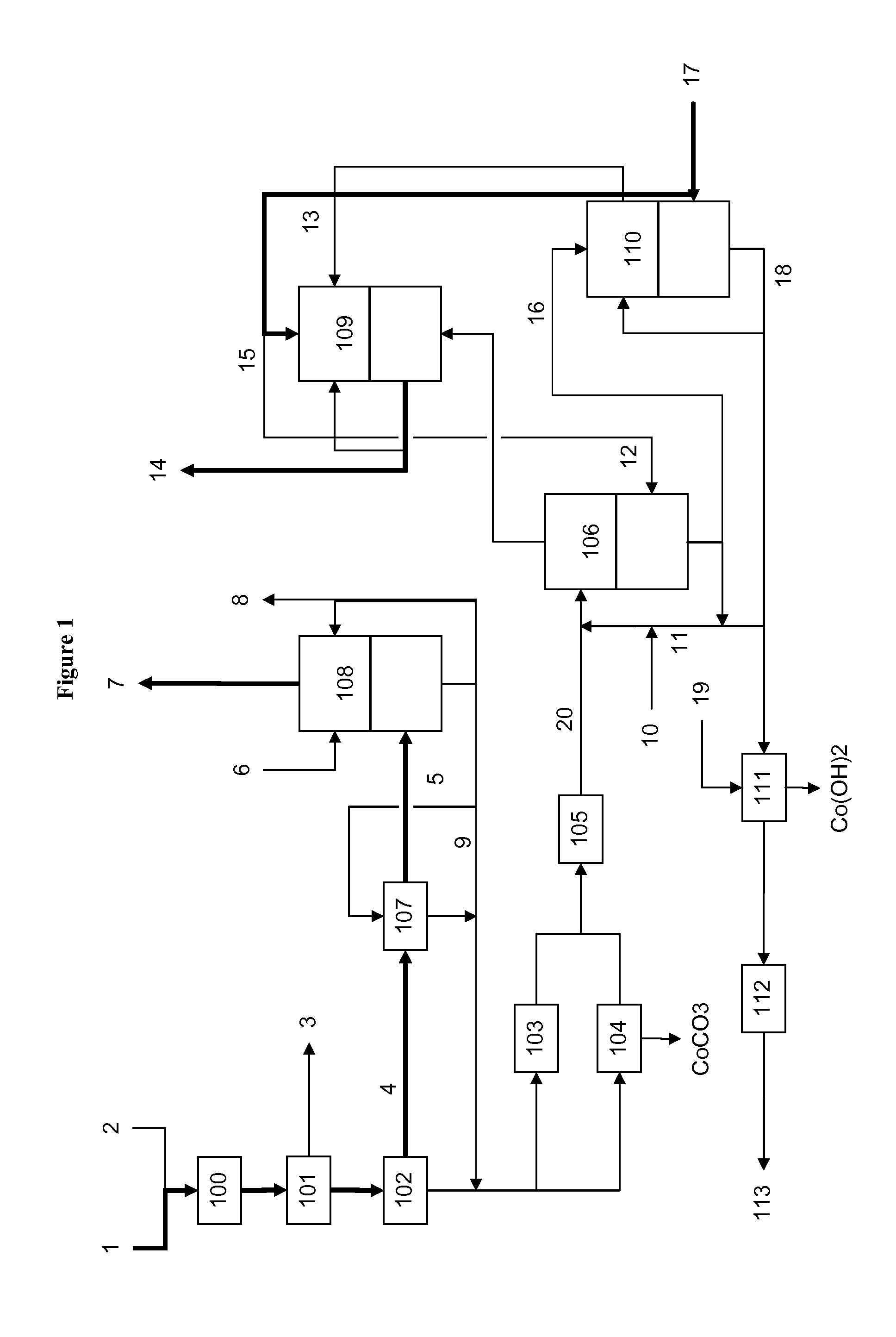Cobalt Recovery From Cobalt Catalysed Hydroformylation Reactions
- Summary
- Abstract
- Description
- Claims
- Application Information
AI Technical Summary
Benefits of technology
Problems solved by technology
Method used
Image
Examples
Embodiment Construction
[0045]Due to the immediate reaction of the salts in the carbonylate with the sulfuric acid, the concentration in the carbonylate acid mixture before any sulfuric acid consuming reaction cannot be measured. It is calculated by taking the mass flow (A in kg / hr) of the diluted sulfuric acid directed to the acidification step, and its acid concentration (C in wt. %), and the flow of the carbonylate (B in kg / hr) to the acidification step, and calculating the concentration of the acid in the acidified carbonylate acid mixture (D in wt. %) before any acid is consumed in a chemical reaction, according to the following formula (I):
D(wt. %)=A(kg / hr)×C(wt. %) / (A(kg / hr)+B(kg / hr)) (I)
[0046]We have found that the acid concentration in the carbonylate / acid mixture, before any sulfuric acid consuming reaction, should be no greater than 10%, and preferably no greater than 8%, since higher acid concentrations can show oxidative activity, which can cause the formation of CO2(CO)8 which is insoluble i...
PUM
| Property | Measurement | Unit |
|---|---|---|
| Fraction | aaaaa | aaaaa |
| Fraction | aaaaa | aaaaa |
| Percent by mass | aaaaa | aaaaa |
Abstract
Description
Claims
Application Information
 Login to View More
Login to View More - R&D
- Intellectual Property
- Life Sciences
- Materials
- Tech Scout
- Unparalleled Data Quality
- Higher Quality Content
- 60% Fewer Hallucinations
Browse by: Latest US Patents, China's latest patents, Technical Efficacy Thesaurus, Application Domain, Technology Topic, Popular Technical Reports.
© 2025 PatSnap. All rights reserved.Legal|Privacy policy|Modern Slavery Act Transparency Statement|Sitemap|About US| Contact US: help@patsnap.com


